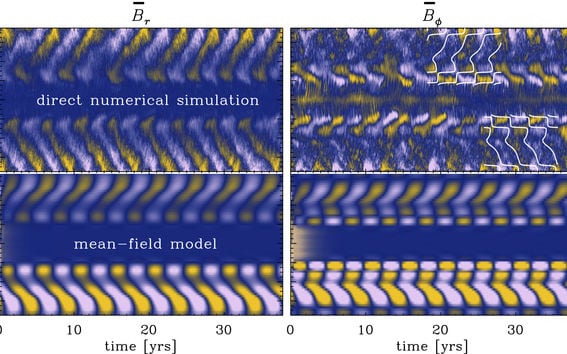Astroinformatics (external link)
Simulations of turbulence and magnetism in astrophysical objects

The role of turbulent effects for dynamos in the Sun and stars continues to be debated. Mean-field (MF) theory provides a broadly used framework to connect these effects to fundamental magnetohydrodynamics. While inaccessible observationally, turbulent effects can be directly studied using global convective dynamo (GCD) simulations. We measure the turbulent effects in terms of turbulent transport coefficients, based on the MF framework, from an exemplary GCD simulation using the test-field method. These coefficients are then used as an input into an MF model. We find a good agreement between the MF and GCD solutions, which validates our theoretical approach. This agreement requires all turbulent effects to be included, even those which have been regarded as unimportant so far. Our results suggest that simple dynamo models, as are commonly used in the solar and stellar community, relying on very few, precisely fine-tuned turbulent effects, may not be representative of the full dynamics of dynamos in global convective simulations and astronomical objects.

Simulations of turbulence and magnetism in astrophysical objects

cs.aalto.fi